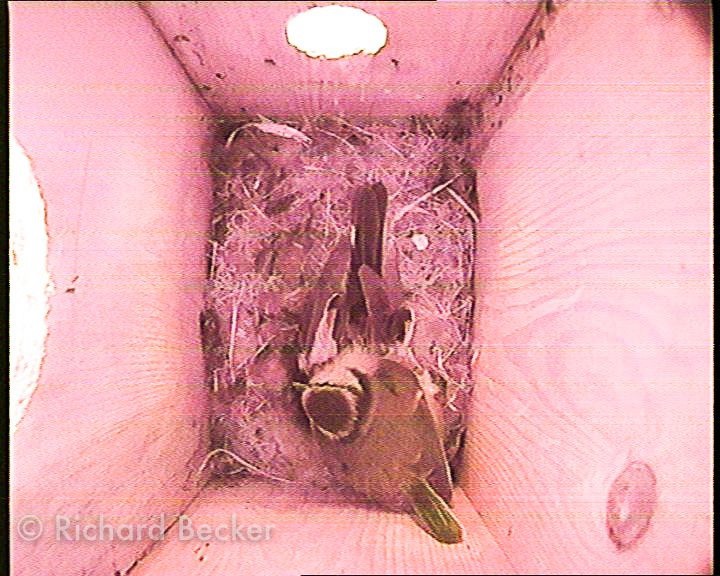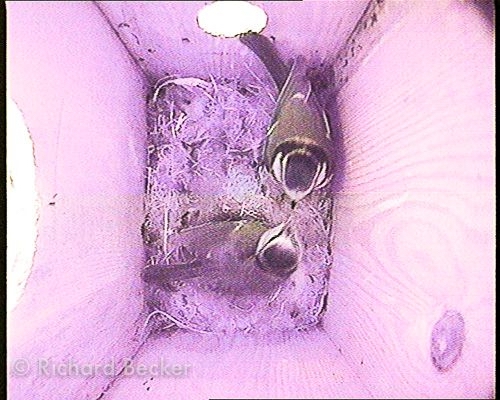11 May 2019
This morning I tuned into the garden nest box camera to see how the blue tit (Parus caeruleus) was getting on. Yesterday (10th May) she had started to incubate her clutch of 7 or 8 eggs.
I was surprised to see not a bird sat patiently on a mossy nest, but her sat instead on top of another bird. I soon realised the other bird was a male pied flycatcher (Ficedula hypoleuca) which an obviously exhausted blue tit was pecking at, and trying to drag off the nest.

I watched for some time and it became clear that the pied flycatcher was in an even worse state than the blue tit and was unable to respond to the ongoing attack, or even move. I do not normally like to intervene, but this nest is the only one in a camera box this year, so in order to at least have the chance of something to watch I climbed up, opened the box, and removed the flycatcher. The bird was clearly in a very bad way (and died shortly afterwards). The blue tit was so exhausted she collapsed on the nest and I was expecting her to die to, but after about half an hour she was looking much better and sat upright once again. After another hour she was being fed by her partner, and even able to leave the box for a short period. The clutch looks undamaged, the nest slightly disturbed.

When cleaning nest boxes in the winter I have sometimes come across the corpses of male pied flycatchers. I had assumed they had died of natural causes, it seems more likely that they were killed trying to usurp a nesting tit.
For several weeks we have had two singing male pied flycatchers in the garden, one either side of the house, both these birds seem to be still in place. This now deceased bird was a likely late arrival and found the best nesting sites already occupied. There are still unoccupied nest boxes, but perhaps they are too close to other flycatchers that have already set up a territory.